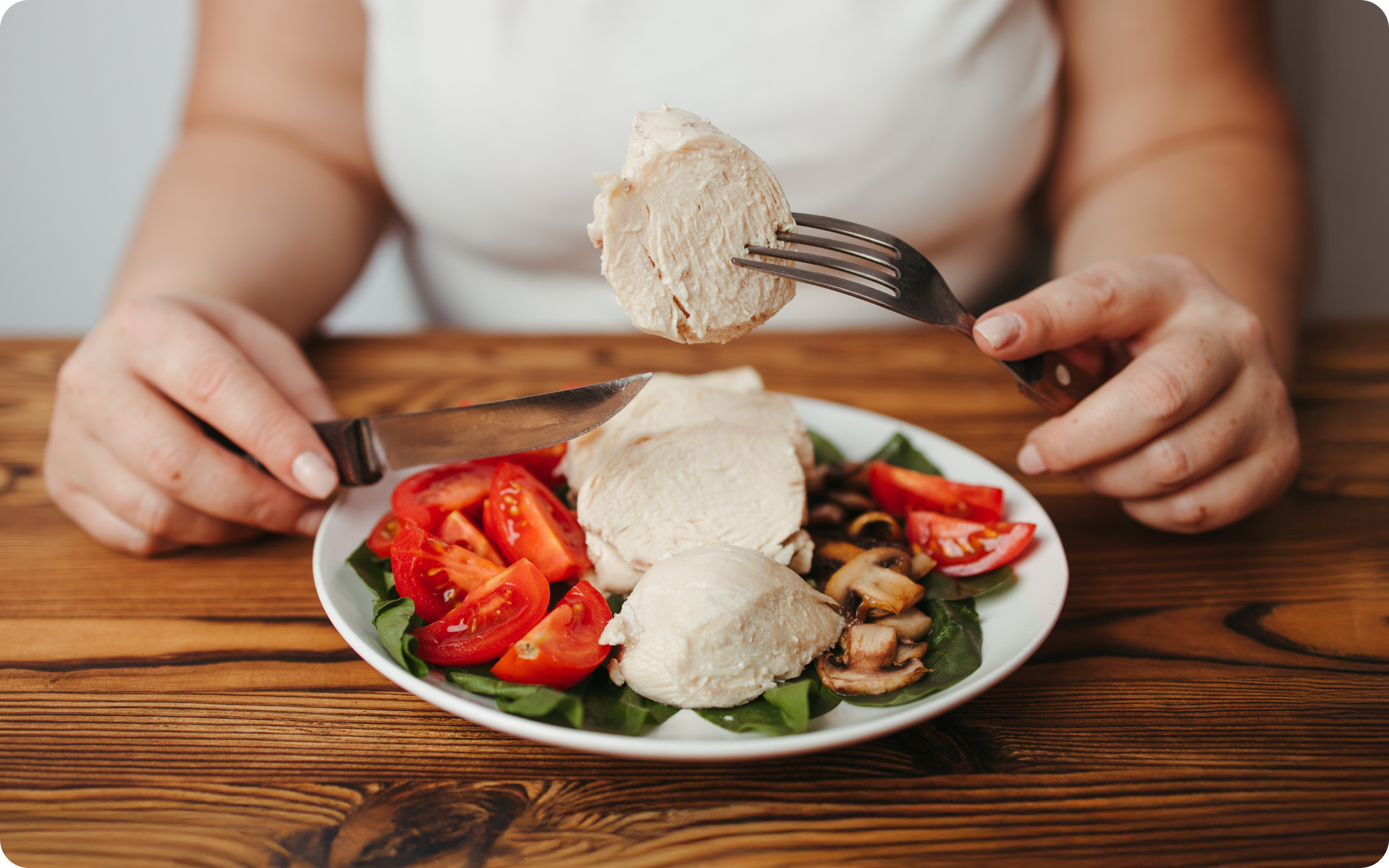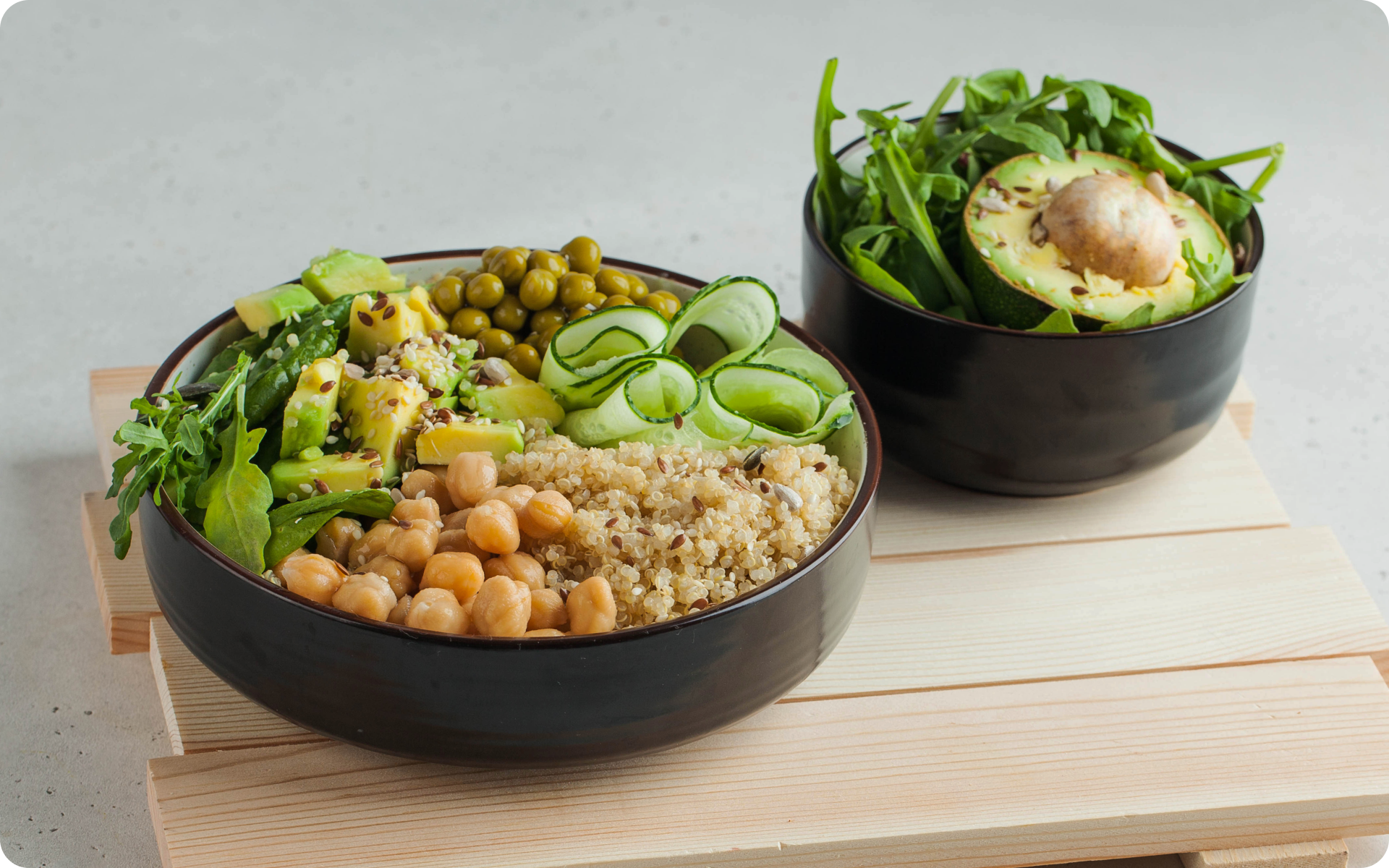Our ancestors were onto something when they started hunting for their food. The sizzling smell of meat on an open fire, the tender bite into a perfectly cooked steak — it’s no wonder that meat has remained a staple in our diets over the centuries.
Today, we have a plethora of options to choose from, each unique in its flavor and texture. Welcome to “The Butcher’s Block: An Insightful Guide to All Types of Meat”.
This guide serves as a comprehensive overview, providing you with intriguing insights into different types of meat from around the world
Whether you’re a seasoned chef looking to expand your culinary repertoire, or a curious foodie eager to go deeper into the world of meats, this guide is designed to satiate your appetite for knowledge. Here’s what you need to know.
What Counts as Meat?
The term “meat” traditionally refers to animal flesh that is consumed as food. This typically includes red meat such as beef, pork, lamb, and goat, as well as poultry like chicken, turkey, and duck. These are derived from animals that live on land.
However, the definition of meat can sometimes vary depending on cultural, dietary, and religious contexts. For instance, in certain religious traditions such as Catholicism, meat is defined as something that comes only from land-dwelling animals, hence seafood is not considered meat in this context.
Fish and other seafood are often categories of their own. Many vegetarians, for example, consume fish while avoiding red meat and poultry, identifying themselves as pescatarians.
In a broader sense, the term “meat” could also include other types of animal flesh, including fish, seafood, and even insects in some cultures. So, what counts as meat can differ greatly depending on the context, but generally, it’s considered to be the flesh of an animal used for food.
Yanking yourself back in shape has never been so easy with our game-changing fitness app! Start transforming your life with BetterMe!
What Are The 4 Types of Meat?
Meat is typically categorized into four main types based on the animals it comes from:
Red Meat
This category includes meat from mammals, such as beef from cows, pork from pigs, lamb from sheep, venison from deer, and goat meat. These meats are generally richer in iron and have a robust flavor.
Poultry
This group encompasses bird meats like chicken, turkey, duck, and goose. Poultry is often praised for its leaner quality and is typically lower in fat and calories compared to red meat, but this can vary.
Fish
This category includes all types of fish, such as salmon, tuna, cod, and haddock. Fish is known for its high protein content and abundant omega-3 fatty acids, which are beneficial for heart health (3).
Seafood
Beyond fish, this category includes shellfish and mollusks like shrimp, lobster, crabs, oysters, clams, and squid. Seafood is lauded for its nutritional value, including high levels of protein, vitamins, and minerals.

What Types of Meat Are Red Meat?
Red meat is a broad term that generally refers to meat derived from mammals. The classification of red meat is based on its color due to the higher levels of the protein myoglobin in these meats compared to poultry and fish (10).
Myoglobin is a protein that helps transport oxygen to muscle cells, and it is responsible for the red or dark color in meat.
Here are some common types of red meat:
Beef
This is one of the most common types of red meat, coming from cattle. It includes various forms like steak, roast beef, and ground beef. Beef is high in protein and rich in essential nutrients like iron and vitamin B12.
Pork
Despite the advertising slogan touting it as “the other white meat,” pork is classified as a red meat (9). It comes from pigs and includes cuts like pork chops, pork loin, and ham.
Lamb and Mutton
Lamb comes from young sheep that are less than a year old, while mutton is meat from older sheep. Both are considered red meats.
Veal
Veal is meat from young cattle, typically milk-fed calves. It’s usually lighter in color than beef but is still categorized as red meat due to its myoglobin content.
Goat
While not as commonly consumed in some parts of the world, goat meat is widely eaten in others and is classified as red meat
Game Meats
These include meats from animals like deer (venison), elk, and bison. As they are mammals, their meat is classified as red.
Processed Meats
Processed meats made from mammal meats, such as sausages, salami, and some hot dogs, are also considered red meats.
While red meat can be a valuable source of nutrients like protein, iron, and vitamin B12, it is also higher in saturated fats than poultry and fish.
High intake of red meat, especially processed red meat, has been linked in some studies to increased risks of heart disease and certain types of cancer (6). Therefore, it’s recommended to consume red meat and processed meat in moderation as part of a balanced diet.
Read more: 7 Benefits of an All-Meat Diet You Need to Know.
What Types of Meat Are White Meat?
White meat is typically characterized by its lighter color before and after cooking, compared to red meat. This color difference is primarily due to lower levels of myoglobin, a protein responsible for the red color seen in certain meats.
White meats are usually lower in fat and calories than red meats, making them popular choices for those seeking leaner protein sources.
Here are some common types of white meat:
Poultry
The most common type of white meat is poultry. This includes chicken, turkey, and duck. Chicken and turkey, in particular, are known for their lean cuts, especially the breast meat. They’re high in protein and low in fat, making them a healthy choice for many diets.
Rabbit
Although not as widely consumed in some countries, rabbit meat is also considered a type of white meat. It’s low in fat and high in protein.

Fish
Fish is often classified as a white meat due to its color and is generally lighter in taste and texture compared to red meat. Some, such as cod, haddock, and tilapia, fall into this category. These types of fish are low in fat and high in protein.
Seafood
Other types of seafood, including shellfish like shrimp, crab, and lobster, are also considered white meat. These foods are rich in lean protein and offer a variety of nutrients.
Pork
There’s some debate about whether pork should be classified as red or white meat. While it’s scientifically categorized as a red meat due to its myoglobin content, it’s often marketed as “the other white meat” due to its light color when cooked.
However, it’s important to note that pork tends to be higher in fat than poultry and fish, and in that way is more similar to other red meats.
Each type of white meat has a unique nutritional profile. Poultry, fish, and other seafood are excellent sources of lean protein and various essential nutrients, making them a healthy choice for most diets. As with any food, however, they should be consumed as part of a balanced diet.
What Type of Meat Is The Most Healthy?
Deciding which type of meat is the healthiest can be complex since it depends on various factors such as nutritional content, cooking method, and personal dietary needs.
However, if we focus on factors like lean protein content, lower saturated fat levels, and essential nutrient quantity, poultry, particularly chicken and turkey, often comes out on top as the best types of meat
Chicken, especially the breast, is known for its high protein content and low saturated fat. It’s also a good source of vitamins B3 (niacin) and B6, which are important for energy metabolism and cognitive function (11).
Turkey, particularly skinless turkey breast, also stands out among healthy types of lean meat. It’s an excellent source of protein and has fewer calories and less fat than most other meats. It’s also rich in selenium, a trace mineral that supports immune function and thyroid health (7).
Fish, specifically fatty fish like salmon, mackerel, sardines, and trout, deserves special mention due to their high omega-3 fatty acid content. These fats are associated with numerous health benefits, including improved heart health and brain function (4).
However, it’s worth noting that preparation methods can significantly impact the healthiness of meat. Grilling, baking, and broiling are generally healthier options than frying or breading.
And while lean meats are generally healthier, it’s also important to have a balanced diet that includes a variety of food groups for overall nutritional well-being. That includes a variety of different meat sources.
Lean and toned up body isn’t just a far-fetched fantasy. Check out the BetterMe app and watch it propel your weight loss journey into high gear!
What Is The Most Unhealthy Type of Meat?
When discussing the unhealthiest types of meat, processed meats often top the list. Processed meats include foods like sausages, hot dogs, bacon, and deli meats such as ham, salami, and corned beef.
These meats have undergone processes like salting, curing, smoking, or adding chemical preservatives to enhance flavor and increase shelf life.
The main health concerns associated with processed meats are their high levels of sodium, saturated fats, and nitrates.
High Sodium Levels
Processed meats are often high in sodium, which can contribute to increased blood pressure and risk of heart disease when consumed excessively (8).
Saturated Fats
These meats also tend to be high in saturated fats, which, when consumed in large amounts, can contribute to high cholesterol levels and increased risk of cardiovascular disease (6).
Nitrates and Nitrites
These are used as preservatives and color enhancers in processed meats. Some research suggests that these compounds can form carcinogenic substances known as nitrosamines in the body, potentially increasing the risk of certain types of cancer (2).
Carcinogenic Risk
The International Agency for Research on Cancer (IARC) has classified processed meat as a carcinogen, meaning it could potentially cause cancer (1). Specifically, there is evidence linking processed meat consumption with an increased risk of colorectal cancer (5).
While enjoying processed meats occasionally is unlikely to cause significant harm, regular and high consumption is generally not recommended for optimal health. As always, moderation and balance are key in maintaining a healthy diet.
Beyond processed meats, certain types of red meat, especially when prepared in certain ways, can also be considered less healthy due to their high saturated fat content and potential carcinogenic properties when cooked at high temperatures.
High-Fat Red Meats
Certain cuts of red meat, especially those with visible marbling or skin, can be high in saturated fats. Regular consumption of these meats may contribute to increased levels of LDL (low-density lipoprotein), often known as ‘bad cholesterol’, which can contribute to the development of heart disease (6).
Charred or Well-Done Meats
Meats cooked at high temperatures, especially when charred or well-done, can produce compounds called heterocyclic amines (HCAs) and polycyclic aromatic hydrocarbons (PAHs).
These substances have been found to have carcinogenic effects in animal studies (12). While the evidence in humans is less clear, it’s generally recommended to avoid excessive intake of heavily charred meats.
Certain Organ Meats
Some organ meats, such as liver, can be high in cholesterol and purines, which can be problematic for individuals with gout or high cholesterol.
However, they’re also rich in essential nutrients, so they shouldn’t necessarily be labeled as ‘unhealthy’ but should be eaten in moderation, especially by individuals with these health concerns. They may also need to be avoided during pregnancy.
Remember that how the meat is prepared and the portion size consumed can greatly affect its health impact. Balance and variety in your diet, combined with regular exercise, play a crucial role in maintaining good health.
Comprehensive Types Of Meat List, In Alphabetical Order. A-Z
This list includes a variety of meats from different animals and birds, each with unique nutritional profiles and flavors. Remember that while some of these meats may be considered unusual or exotic in certain cultures, they are commonplace in others.
- Alligator: An exotic meat primarily consumed in certain U.S. regions and other parts of the world.
- Bacon: A type of salt-cured pork, typically from the belly or back cuts.
- Beef: Meat from cattle, including popular cuts like steak, ribs, and ground beef.
- Buffalo/Bison: A lean red meat from the American Bison, often used as a healthier alternative to beef.
- Chicken: A common white meat that comes in various cuts, including breast, thigh, wing, and drumstick.
- Duck: A type of poultry that is richer in fat compared to chicken or turkey.
- Elk: A type of game meat, leaner and higher in protein than beef.
- Fish: Includes a wide variety of species like salmon, tuna, cod, etc.
- Goat: Widely consumed in many parts of the world, goat meat is lean and flavorful.
- Ham: A cut from the hind leg of a pig, often cured or smoked.
- Insects: In some cultures, insects are a source of protein. Examples include crickets and mealworms.
- Jerky: Lean trimmed meat that has been cut into strips and dried.
- Kangaroo: Consumed in Australia, it’s a lean game meat with a strong flavor.
- Lamb: Meat from young sheep, known for its tender and mildly gamey flavor.
- Mutton: Meat from older sheep, typically tougher and more strongly flavored than lamb.
- Ostrich: A red meat that is leaner and lower in fat than beef and even chicken.
- Pork: Meat from pigs, includes cuts like pork chops, pork loin, and ham.
- Quail: A small game bird with meat that is tender and delicately flavored.
- Rabbit: Considered a game meat, rabbit is lean and mildly flavored.
- Snake: Consumed in various cultures around the world, snake meat is often described as tasting like chicken.
- Turkey: A type of poultry that is leaner and has less saturated fat than red meat.
- Veal: Meat from bovine calves, usually lighter in color than beef and with a delicate flavor.
- Wild Boar: A game meat that is leaner and deeper in flavor than pork.
- eXotic meats: This category can include a variety of unusual meats depending on the region, such as iguana, or camel.
- Yak: A type of bovine found in the Himalayas, yak meat is lean and sweet.
- ZebrWhile not commonly consumed globally, zebra is a game meat eaten in certain regions.
Read more: Benefits Of High Fat Diet: Science Backed Facts.
FAQ
What Types Of Meat Are Great For A Keto Diet?
The keto diet prioritizes high-fat, low-carb foods. Ideal meats for this diet include fatty cuts of beef, pork, lamb, and fish. Organ meats, poultry, and seafood are also good choices. Lean meats are fine too, as long as other healthy fat sources are included in the diet. Processed meats should be consumed in moderation due to their typically high sodium content.
How Long Do You Cook Different Types Of Meat?
Cooking times vary depending on the type and cut of meat, and the method of cooking. For instance, a whole chicken might take 1-2 hours to roast in the oven, while a steak could take just a few minutes per side on a hot grill.
Always use a meat thermometer to ensure meat is cooked to a safe internal temperature: 165°F for poultry, 145°F for pork and fish, and 145°F for steaks and roasts (allowing to rest for at least 3 minutes before carving or consuming).
What Types Of Meat Help Boost Estrogen?
No types of meat directly boost estrogen. However, certain meats like chicken liver are rich in B vitamins and other nutrients which can support overall hormone production. It’s important to remember that hormone regulation is complex and involves more than just diet. Always consult with a healthcare professional for personalized advice.
What Are The Advantages Of Rabbit Meat Over Other Types Of Meat?
Rabbit meat has several advantages. It’s lean, meaning it’s low in fat, and it’s also high in protein. Rabbit is a good source of minerals like phosphorus and potassium.
In addition, as a game meat, it’s often free from the antibiotics and hormones that may be found in industrially-raised livestock. Finally, rabbits have a high reproduction rate, making it a sustainable meat source.
The Bottom Line
From the juicy tenderness of a well-cooked steak to the savory flavor of roasted chicken, meat plays a significant role in many diets. This guide provides a comprehensive look at various meats, their unique characteristics, and how best to prepare them.
Whether you’re a budding chef or an experienced foodie, this guide will deepen your understanding and appreciation of the diverse world of meats.
DISCLAIMER:
This article is intended for general informational purposes only and does not serve to address individual circumstances. It is not a substitute for professional advice or help and should not be relied on for making any kind of decision-making. Any action taken as a direct or indirect result of the information in this article is entirely at your own risk and is your sole responsibility.
BetterMe, its content staff, and its medical advisors accept no responsibility for inaccuracies, errors, misstatements, inconsistencies, or omissions and specifically disclaim any liability, loss or risk, personal, professional or otherwise, which may be incurred as a consequence, directly or indirectly, of the use and/or application of any content.
You should always seek the advice of your physician or other qualified health provider with any questions you may have regarding a medical condition or your specific situation. Never disregard professional medical advice or delay seeking it because of BetterMe content. If you suspect or think you may have a medical emergency, call your doctor.
SOURCES:
- Cancer: Carcinogenicity of the consumption of red meat and processed meat (2015, who.int)
- Estimated Cancer Risks Associated with Nitrosamine Contamination in Commonly Used Medications (2021, nih.gov)
- Omega-3 fatty acids and cardiovascular disease (2015, pubmed.gov)
- Omega-3 Fatty Acids: An Essential Contribution (n.d., harvard.edu)
- Pattern of DNA Damage Links Colorectal Cancer and Diet High in Red Meat (2021, cancer.gov)
- Potential health hazards of eating red meat (2017, pubmed.gov)
- Selenium: An Element of Life Essential for Thyroid Function (2021, nih.gov)
- Sodium (2021, cdc.gov)
- Studies on meat color, myoglobin content, enzyme activities, and genes associated with oxidative potential of pigs slaughtered at different growth stages (2017, nih.gov)
- The color of meat depends on myoglobin: Part 1 (2014, msu.edu)
- Vitamins and Minerals for Energy, Fatigue and Cognition: A Narrative Review of the Biochemical and Clinical Evidence (2020, nih.gov)
- Well-done Meat Intake, Heterocyclic Amine Exposure, and Cancer Risk (2010, nih.gov)









